Choshir payesh aka chushi pitha is one of the most authentic and scrumptious Bengali pitha recipes. It is rich, irresistibly delicious and full of flavours. It is an old traditional Bengali pithe which almost got lost with time due to our busy life schedule. It is an asset of Bengali pithe recipe which is prepared during poush parbon. In this preparation, small elliptical shaped dumplings are prepared with soft rice flour dough and then cooked in milk with date palm jaggery. Choshi payesh is mostly served as breakfast or snacks. But can be relished during any time of the day to satisfy your craving.
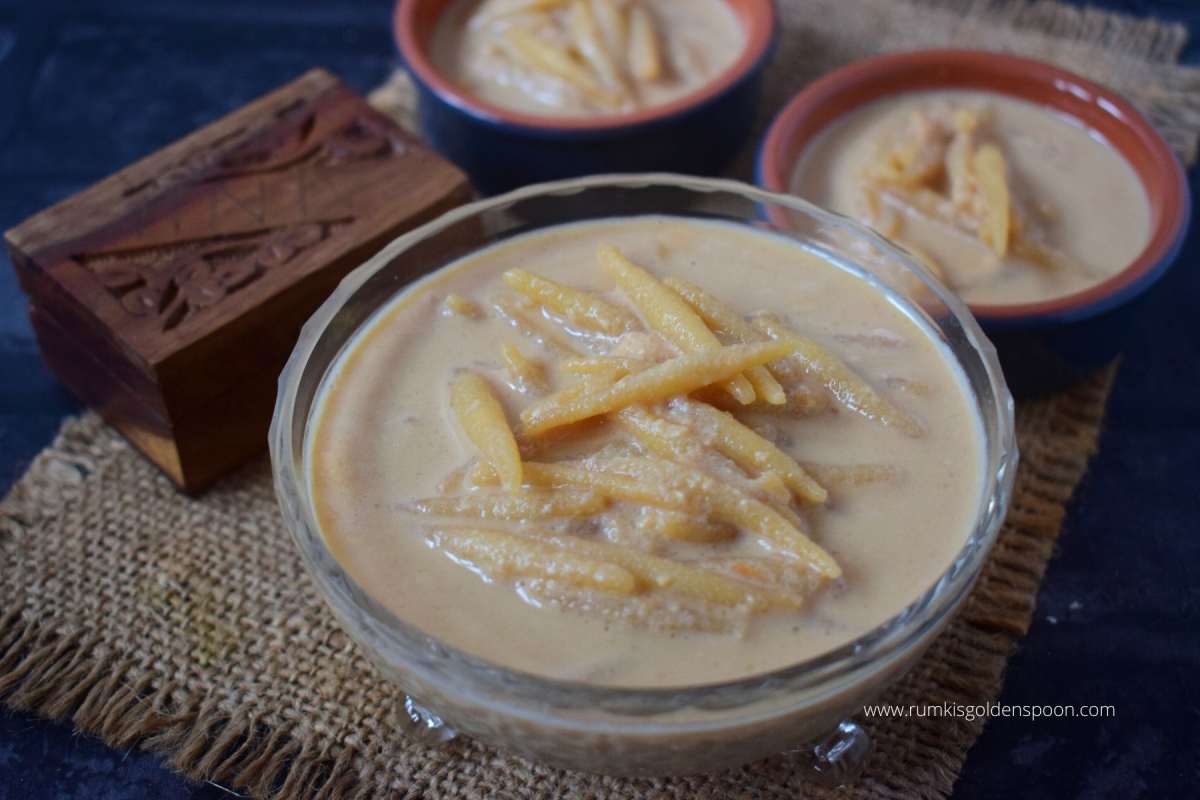
Table of Contents
About the recipe
Tips and Suggestions
How to make Choshir payesh (step wise photos)
Recipe Card
What is choshi?
Choshi aka chushi is basically a tiny Bengali pitha recipe which is prepared in batches. It is basically small elliptical shaped dumplings that are prepared with soft dough. To prepare the choshi or chushi, small pinch of the dough is taken and rubbed with hands to turn into tiny elliptical dumpling.
Previously, when people used to stay in joint families, all the homemakers used to sit together and prepare choshi pitha in large batches. Then they used to sun dry them and store them in airtight glass container for months. They used to take only the required amount of choshi to prepare choshi pitha. This pitha preparation requires lots of time, dedication and patience. At that time, choshi pitha was crazily popular and used to get prepared in almost every Bengali house during winter. Now a days due to massive availability of junk foods and busy life schedule, this traditional pithe recipe is disappearing slowly.
There are mainly two types of chushi pitha that are prepared in Bengali houses. One type is prepared with rice flour dough and another type is prepared with all purpose flour dough. Both the varieties are hugely popular in West Bengal and Bangladesh.
Choshi pitha prepared with rice flour is also popular as choshir payesh, doodh pithe, pithe payesh. In West Bengal and in Bangladesh, it is popular as hathe kata semai pitha, gura pitha, chui pitha, semai pitha etc.
Choshir payesh prepared by all purpose flour aka maida is popular as doodh pithi. In this preparation, the size of the choshi is much tinier than rice flour made choshi and is fried in desi ghee before adding to the milk. Now days, readymade choshi prepared with all purpose flour are easily available in market and online. It looks similar to orzo pasta but no eggs are added into the dough. I will definitely share the doodh pithi recipe with you very shortly.
Today, just before the special occasion of Poush Sankranti, I am going to share the traditional choshir payesh recipe with you. Before going through the recipe, I know many people are not aware of both the terms ‘Poush Parbon’ and ‘Bengali pitha’. First let me tell few words about these two terms.
What is poushparbon?
Poushparbon is one of the most integral parts of Bengali culture which has been conserved by generations and is celebrated each year in the month of January. Poushparbon is celebrated in Poush mash of Bengali year which is also popular as month of pitha-puli. During this occasion, every Bengali house is flavoured with Nolengur (Date palm jaggery), coconut and kheer (reduced milk). There are various kinds of Bengali pithe that are prepared in each Bengali kitchen to celebrate the festival of food.
What is Bengali pithe?
During poushparbon, new harvests and nolen gur arrive and this is used to prepare Bengali pithe in each house to celebrate the culinary diversity. There are myriad Bengali pithe recipes in Bengali cuisine, among which patishapta, pulipitha, choshir payesh, puapitha are few of the most popular ones.
Choshi payesh is undoubtedly one of the most traditional and luscious variety of Bengali pithapuli recipe. In fact, in many authentic Bengali restaurants, it has occupied the place in the exclusive dessert section of their menu card.
As a Bengali, I have grown up eating this delight. I still remember how my grandmother (Dida) used to ground the rice grains and prepare huge quantities of choshi so perfectly and quickly. Then in a large kadai, she used to prepare large quantity of choshir payesh for around a hundred people. The pithe payesh was distributed to the neighbours and relatives other than family members. Till now, I can’t forget the taste of this warm delight.
Honestly, choshir payesh is a simple Bengali pithe recipe. All the ingredients required to prepare the dish is very basic and they are easily available in any kitchen pantry, except patali gur. But now a days you can buy nolen gur or patali gur online any time of the year. The difficulty level of preparing this Bengali recipe is moderate. This recipe demands only time and patience from you like most of the other Bengali pithepuli.
The preparation of the choshi payesh recipe is divided into two parts. First, we need to prepare the soft rice flour dough with which we need to prepare small elliptical shaped dumplings of around 1 inch.
Secondly, we need to cook the payesh recipe with these small elliptical shaped dumplings aka hathe kata choshi or semai.
Choshir payesh with step by step photos and instructions have been provided in the ‘Instructions’ section of the recipe. I have included all the tricks and tips below and in the instruction section to make the recipe easier for you on very first attempt. If you follow the steps precisely then you will definitely get perfect chushi pitha as outcome.
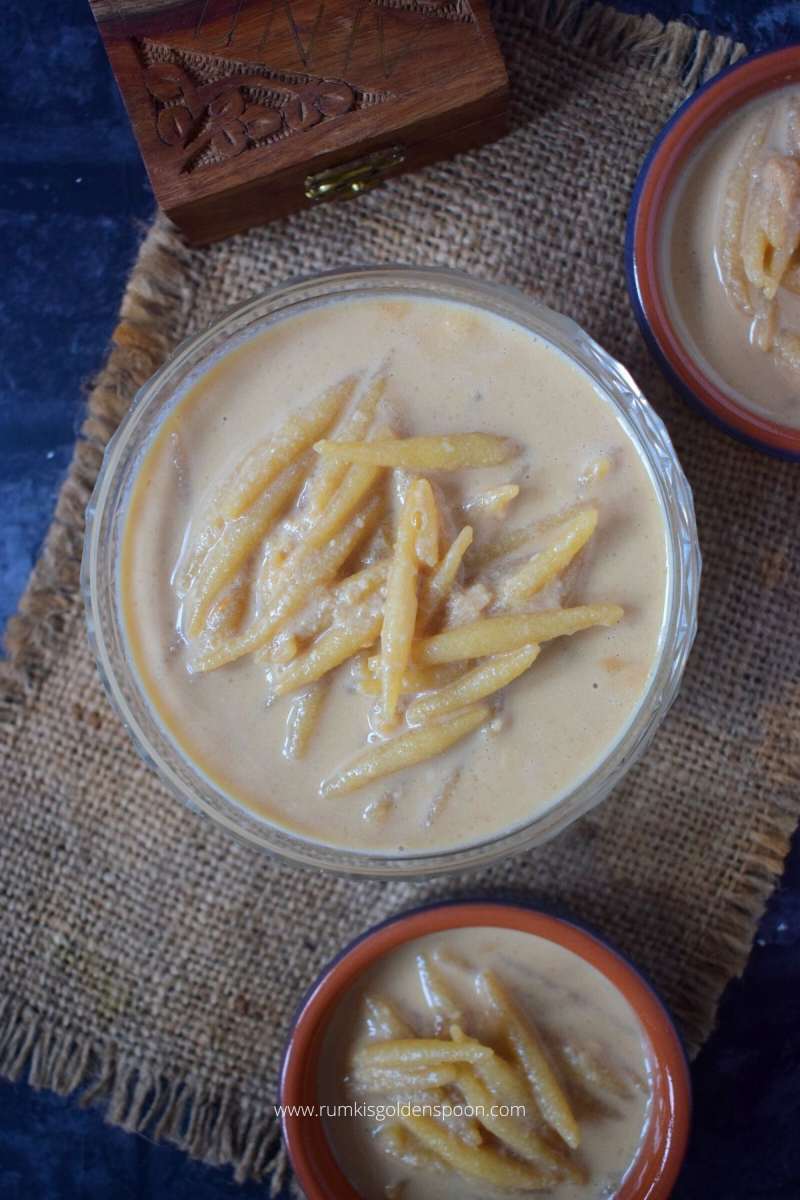
Tips to prepare perfect choshi payesh
- Add little bit of salt during the time of preparing the dough. It enhances the taste and flavour of the pitha.
- After preparing the dough, cover it with wet cloth or else the dough will become dry and hard. As a result,
cracks will occur during the time of shaping them. - Dust the surface with rice flour before shaping the dough to chushi. It will make your job easier.
- Sprinkle little bit of rice flour over the shaped choshi too. It resists them to stick to each other.
- Addition of bay leaf and cardamoms enhances the flavour of the dish. Don’t skip it.
- Add the patali gur aka jaggery in the milk before adding the choshi.
- Add the choshi into the milk in small batches. Don’t add them all at once. It may stick to each other.
- Choshi is very delicate. Don’t stir it frequently after adding into the milk or else they will break.
- Choshir payesh gets thicker after cooling down. So, adjust the consistency accordingly.
How to make choshi payesh?
To prepare choshir payesh, first we need to prepare the rice flour dough. For the dough, first take a pan and add water to it. Then add little bit of salt into the water and allow it to boil. Once the water stars boiling, put the flame in low and add the rice flour into it. Cover the pan and cook it in lowest flame for 2-3 minutes. Then take off the lid and mix the content thoroughly until it turns into dough. Switch off the flame and transfer the content to a separate plate. Allow the content to release little bit of heat and knead the mixture thoroughly to a smooth and soft dough. Make sure the mixture is warm during the time of kneading. Then transfer the dough into a bowl and cover it with a wet cloth.
Take a clean surface and dust it with rice flour. Take a large pinch of the dough, like a ping pong ball in your hand and again cover rest of the dough with wet cloth. Make a thin rope by rolling it on the surface with hands. Then take a tiny pinch from the dough and rub it on the surface 2-3 times with your palm applying light pressure to shape the small elliptical dumplings aka choshi. This is the traditional way of preparing choshi. In this way, choshi can be prepared faster. But there is one more way to shape choshi for novice. You can take a tiny pinch of the dough on your palm and rub it with the palm of your other hand applying little pressure. In this way, you can easily shape the choshi.
the same process and prepare choshi with rest of the dough.
After preparing the choshi, in this way, you can store it in an air tight container and refrigerate for 1 week.
Now put a heavy bottom pan on medium flame and add milk into it. Add bay leaf, cardamoms into the milk and give a stir. Once the milk starts boiling, put the flame in low and reduce it for 10-15 minutes. Then add the grated or small pieces of date palm jaggery aka patali gur into the milk and stir it until the jaggery melts. Cook it in low flame for another 5-6 minutes.
Then add the choshi into the pan in small batches and give a gentle stir. Don’t add all the choshi at once or else then they may stick to each other. Sprinkle the choshi in small batches into the milk and stir once before adding the next batch.
Now, cook the choshi in low flame for 8-10 minutes until it gets cooked. Stir it very gently on regular intervals when required. Choshir payesh gets thicker after cooling down. So adjust the consistency accordingly. Then switch off the flame and allow it to cool down completely before serving.
Many Bengali pitha recipes have already shared in my previous posts. You may like few of them like
Patishapta
Pua pitha
Nolen gurer payesh
Rosh bora
..And Many more…
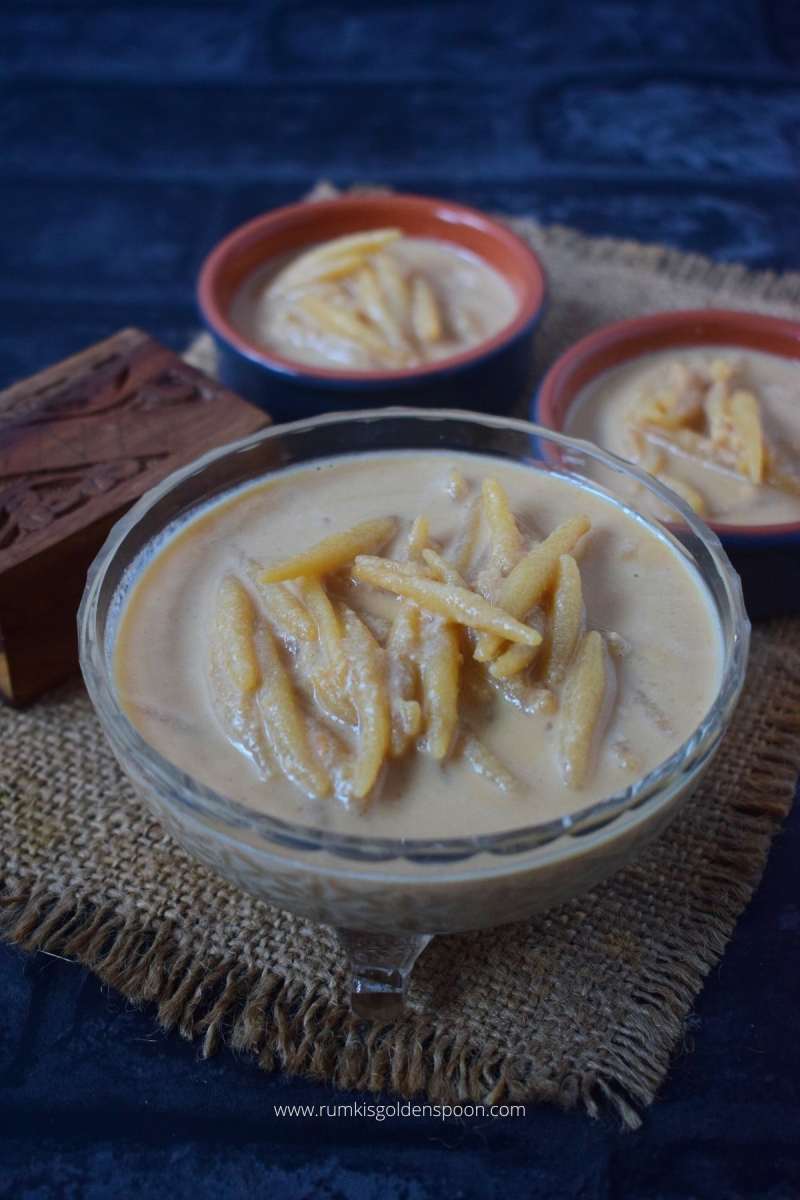
1 cup = 250 ml
For the rice dough
- ¾ cup Rice flour
- 1 cup Water
- ½ teaspoon Salt
Ingredients for choshir payesh
- 1 litre full cream Milk
- 300 grams Patali gur aka Date palm jiggery
- 1 Bay leaf
- 3 Cardamoms
Instructions:
- For the dough, first take a pan and add 1 cup water to it. Then add ½ teaspoon salt into the water and allow it to boil thoroughly.
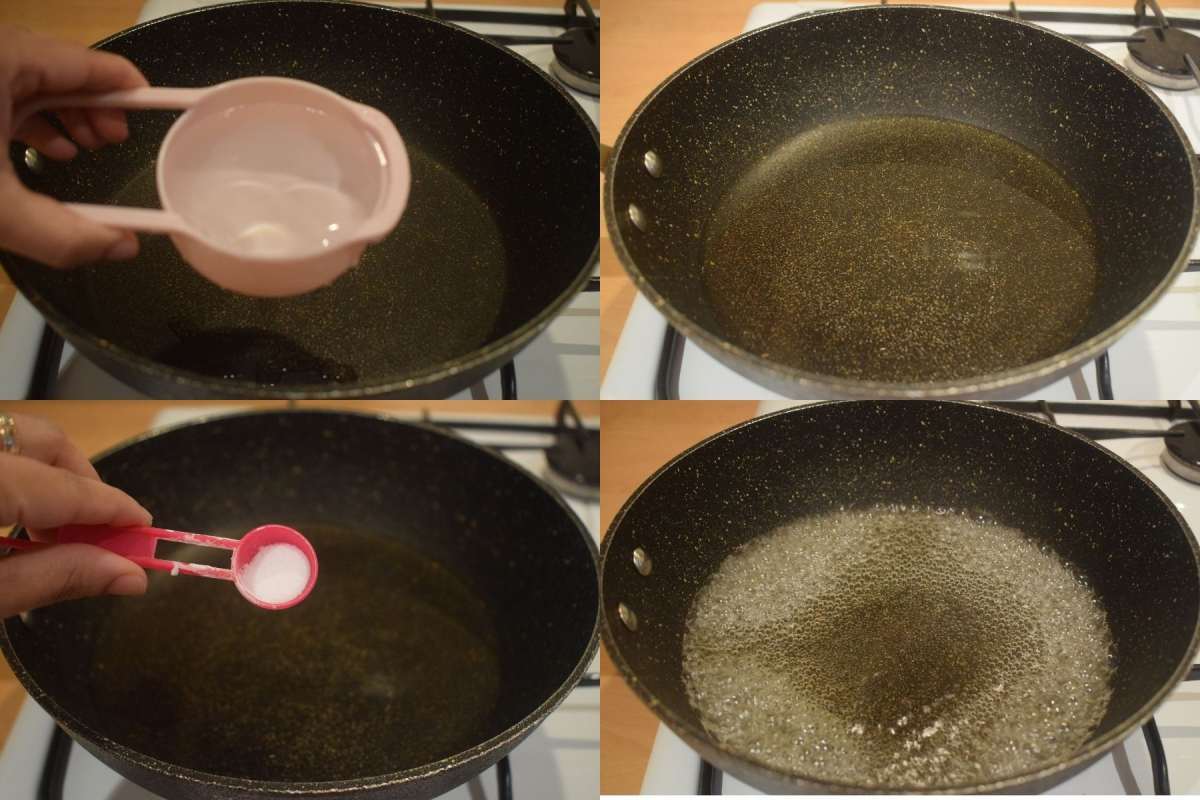
- Once the water stars boiling, put the flame in low and add ¾ cup rice flour into it. Cover the pan and cook it in lowest flame for 2-3 minutes.
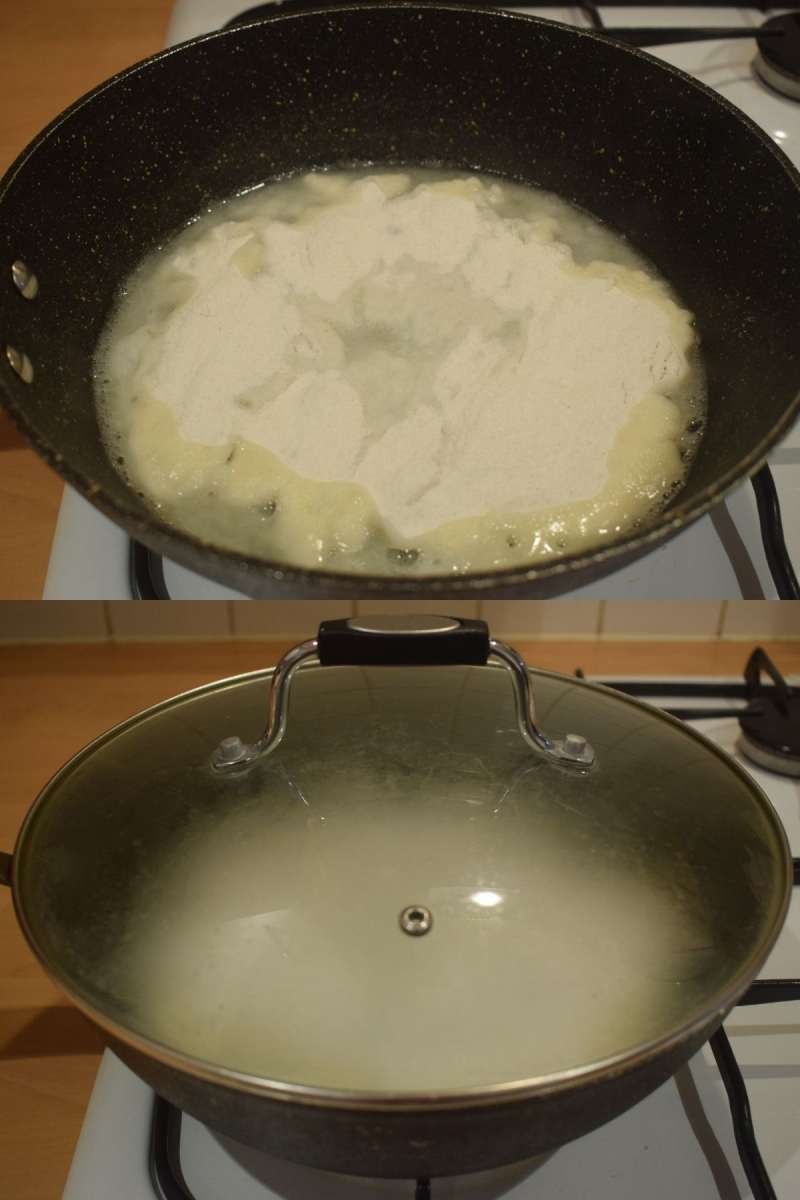
- Take off the lid and mix the content thoroughly until it turns into a dough.
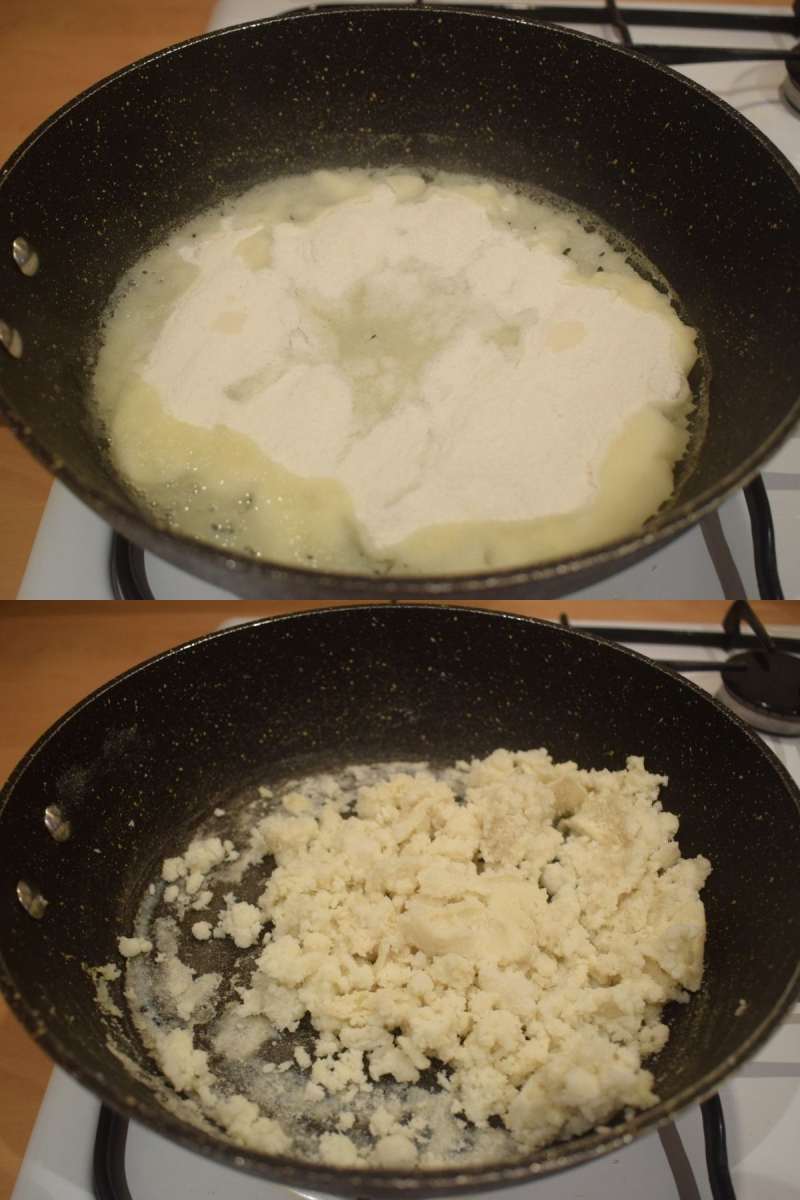
Note: At this stage, if you feel the dough is too tight then you can add little bit of water and if you feel the dough is too soft then you can add rice flour to adjust. For me, the measurement was perfect and did not require any extra water or rice flour. - Switch off the flame and transfer the content to a separate plate. Allow the content to release little bit of heat. Knead the mixture thoroughly to a smooth and soft dough. Make sure the mixture is warm during the time of kneading.
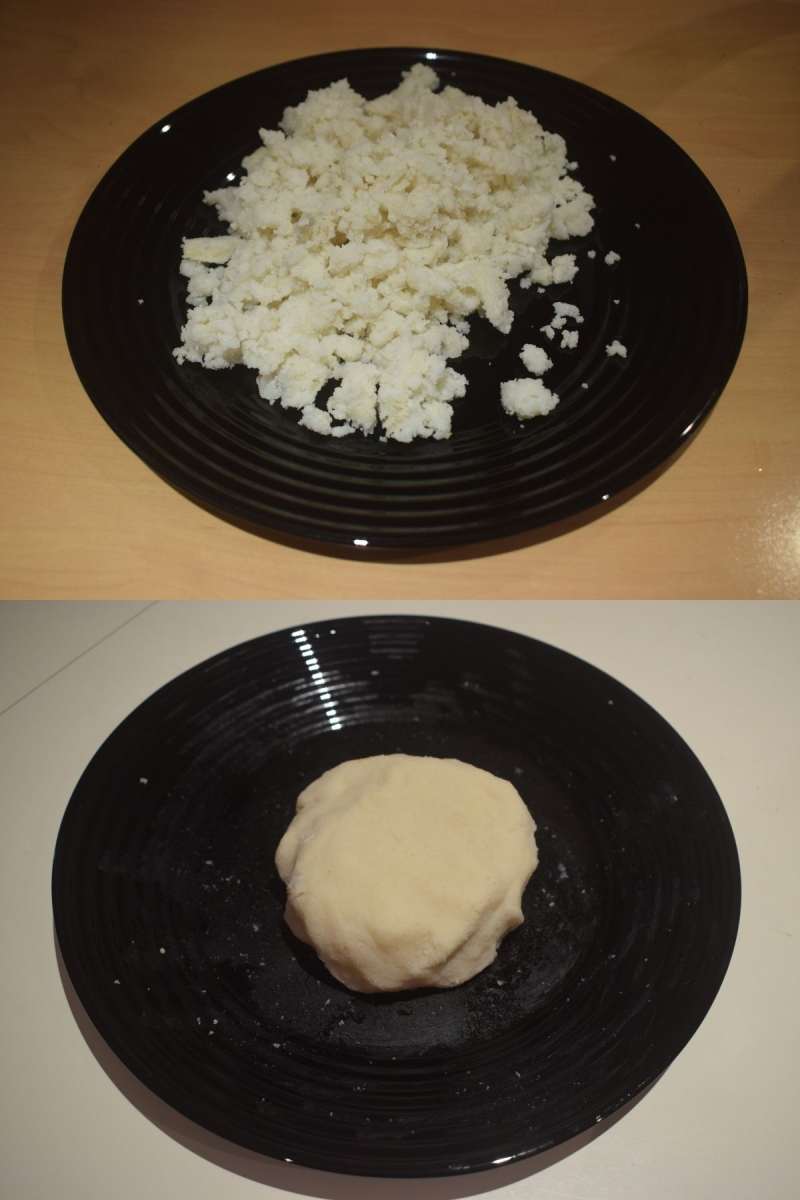
- Transfer the dough into a bowl and cover it with a wet cloth.
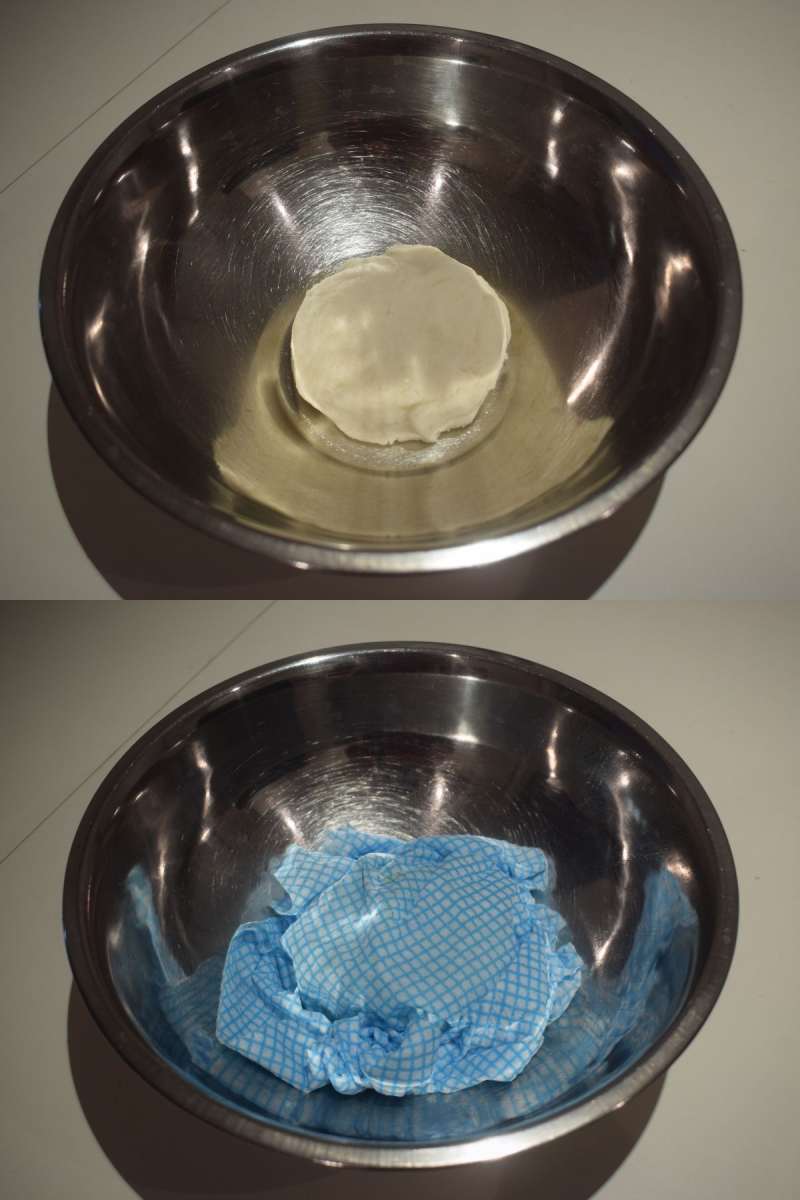
- On a clean surface, dust with rice flour. Take large pinch of dough like a ping pong ball in your hand and again cover rest of the dough with wet cloth. Make a thin rope by rolling the dough on the surface with hands.
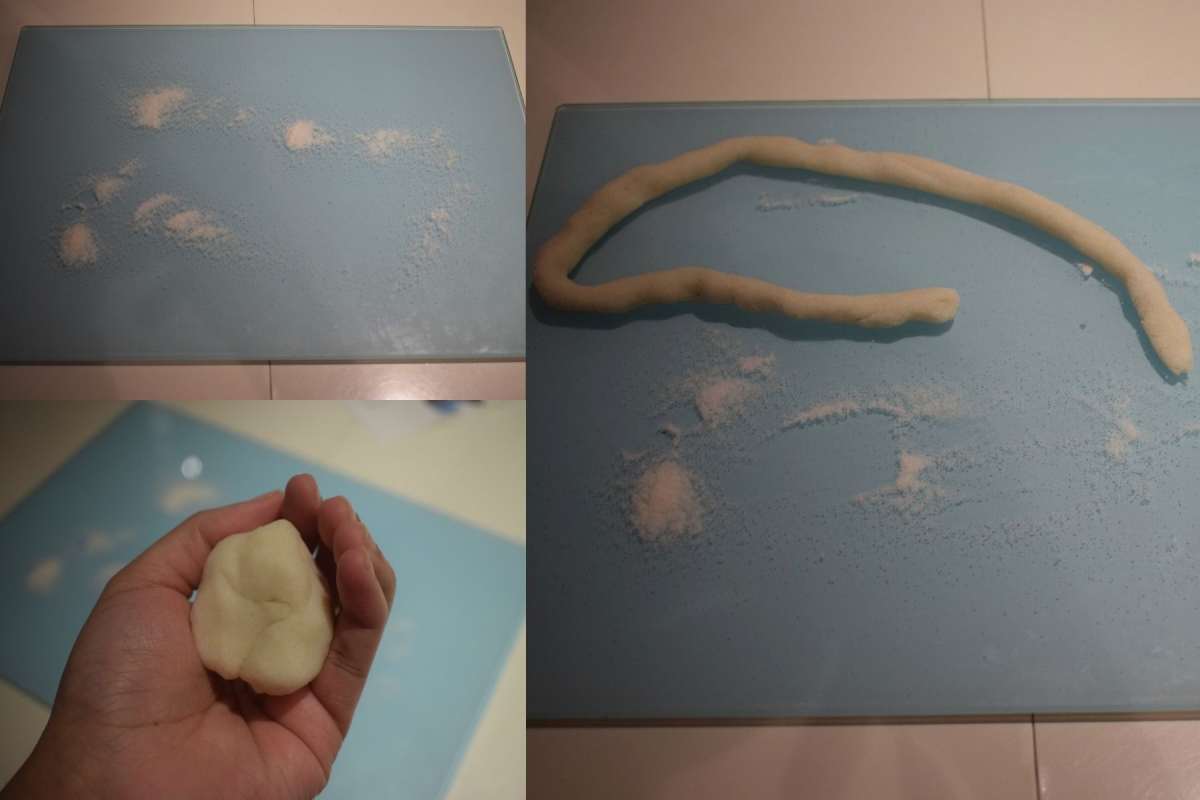
- Take a tiny pinch from the dough and rub it on the surface 2-3 times with your palm applying light pressure to shape the small elliptical dumplings aka choshi. This is the traditional way of preparing choshi.
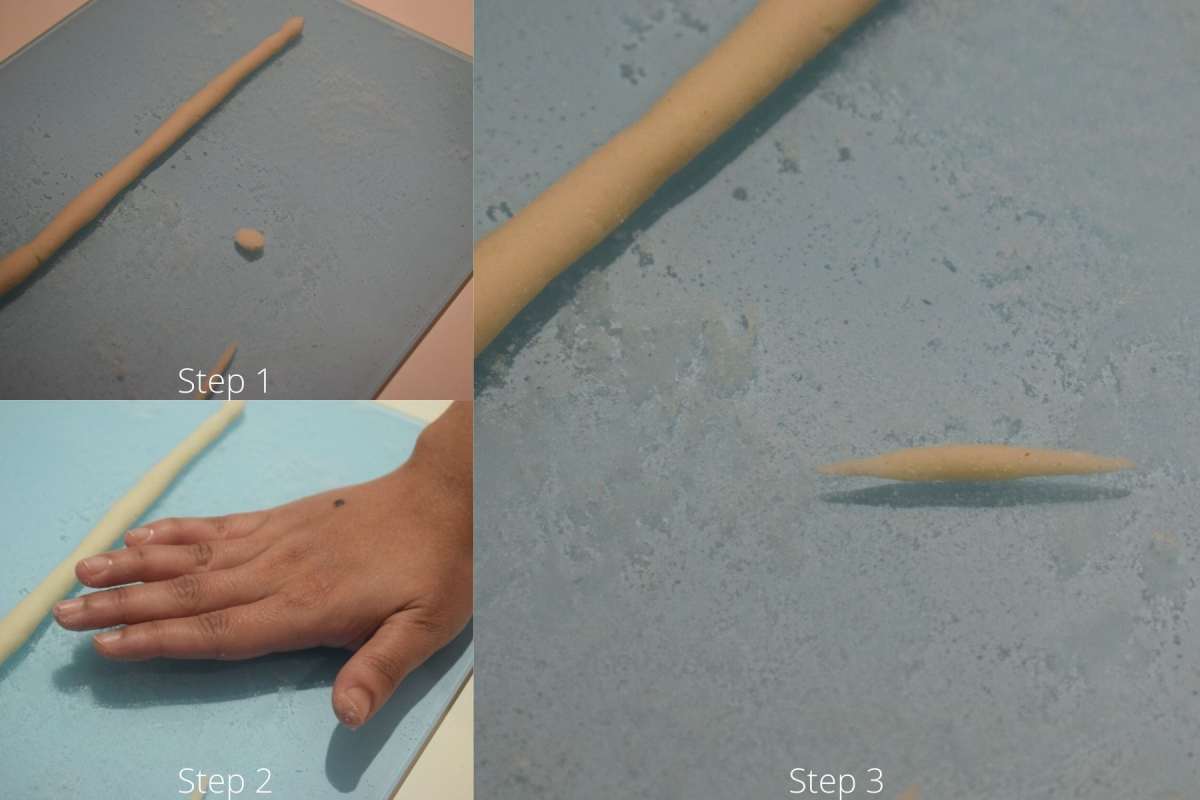
- But there is one more way to shape choshi for novice. You can take a tiny pinch of the dough on your palm and rub it with another palm of your hand applying little pressure. In this way, you can easily shape the choshi.
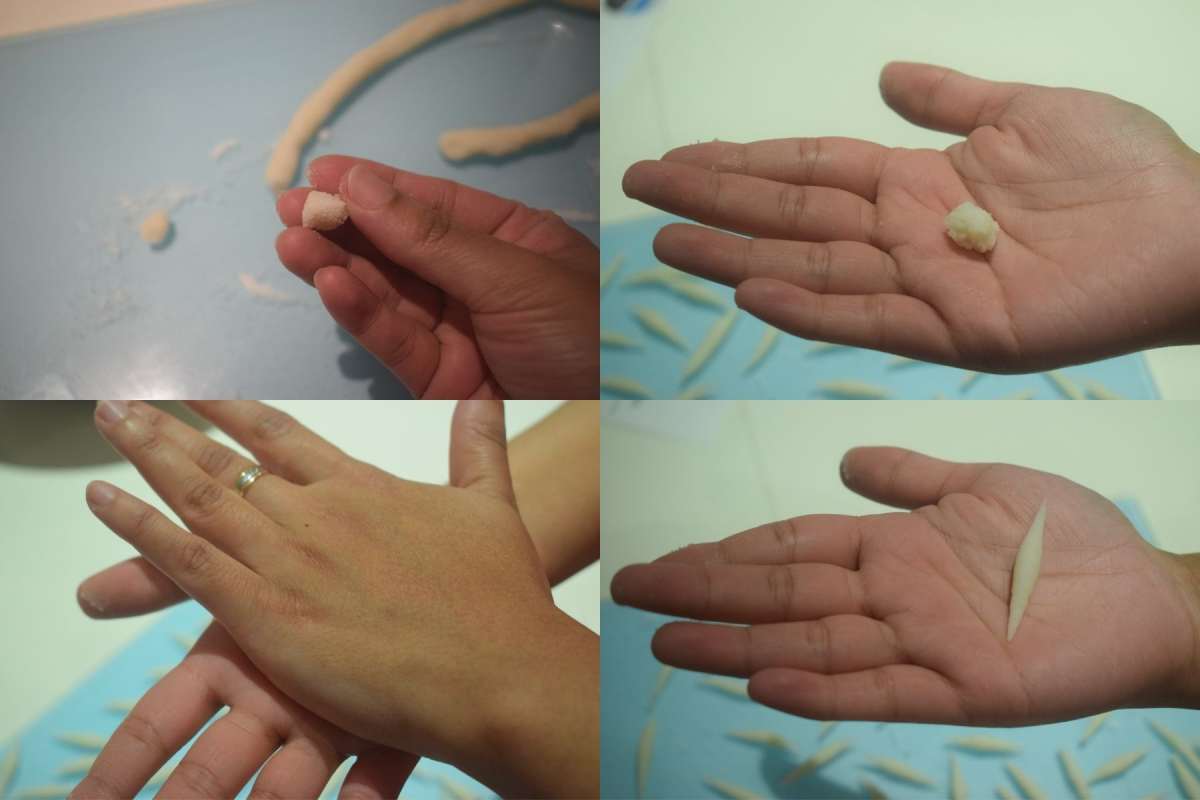
- After shaping the choshi, sprinkle little bit of rice flour on them so that they can’t stick to each other. Repeat the same process and prepare choshi with rest of the dough.
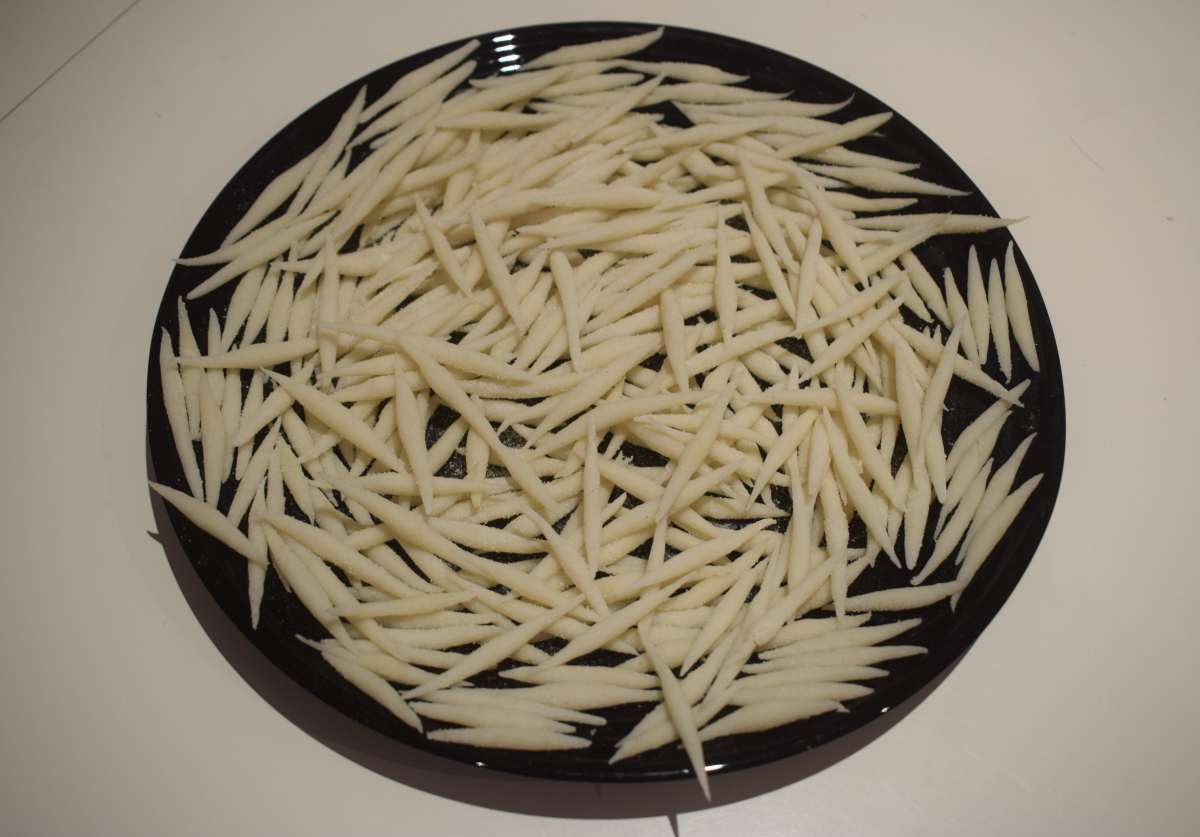
Note: You can shape the choshi small, medium or large according to your preferred size. - Now put a heavy bottom pan on medium flame and add 1 litre milk into it.
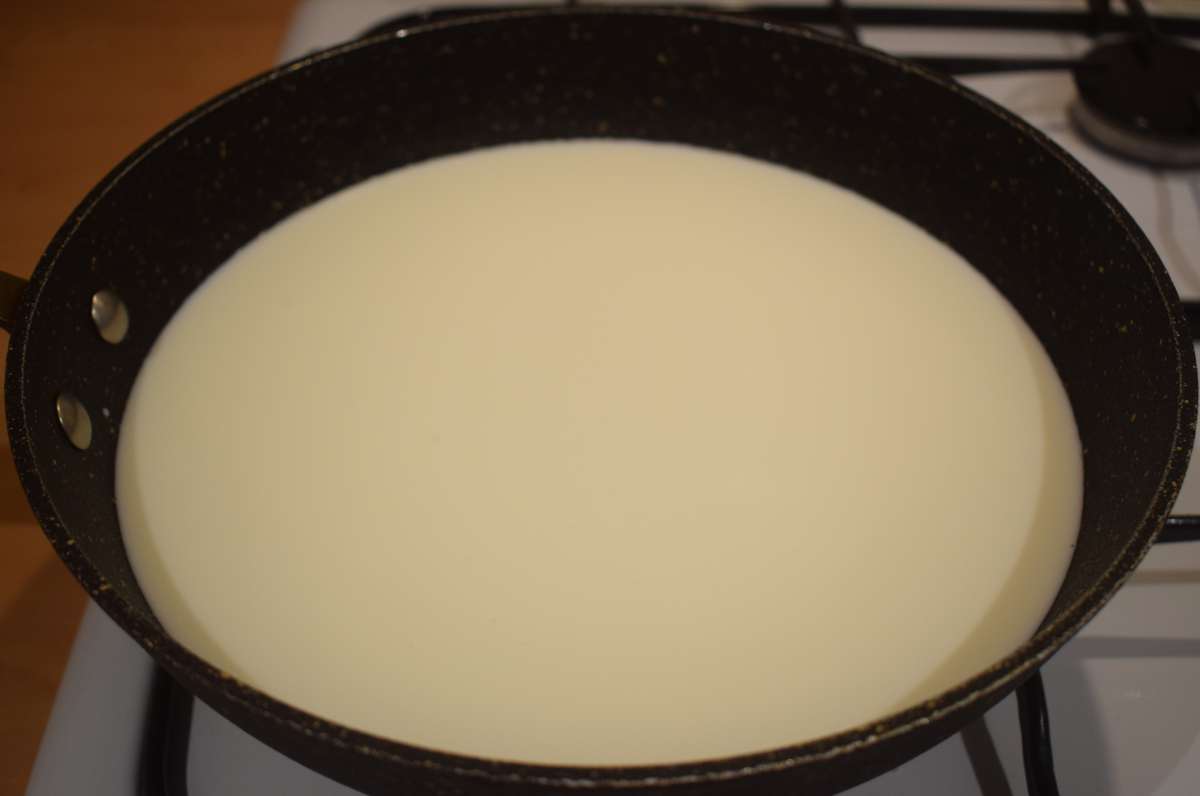
- Add 1 bay leaf, 3 cardamoms into the milk and give a stir. Once the milk starts boiling, put the flame in low and reduce it for 10-15 minutes.
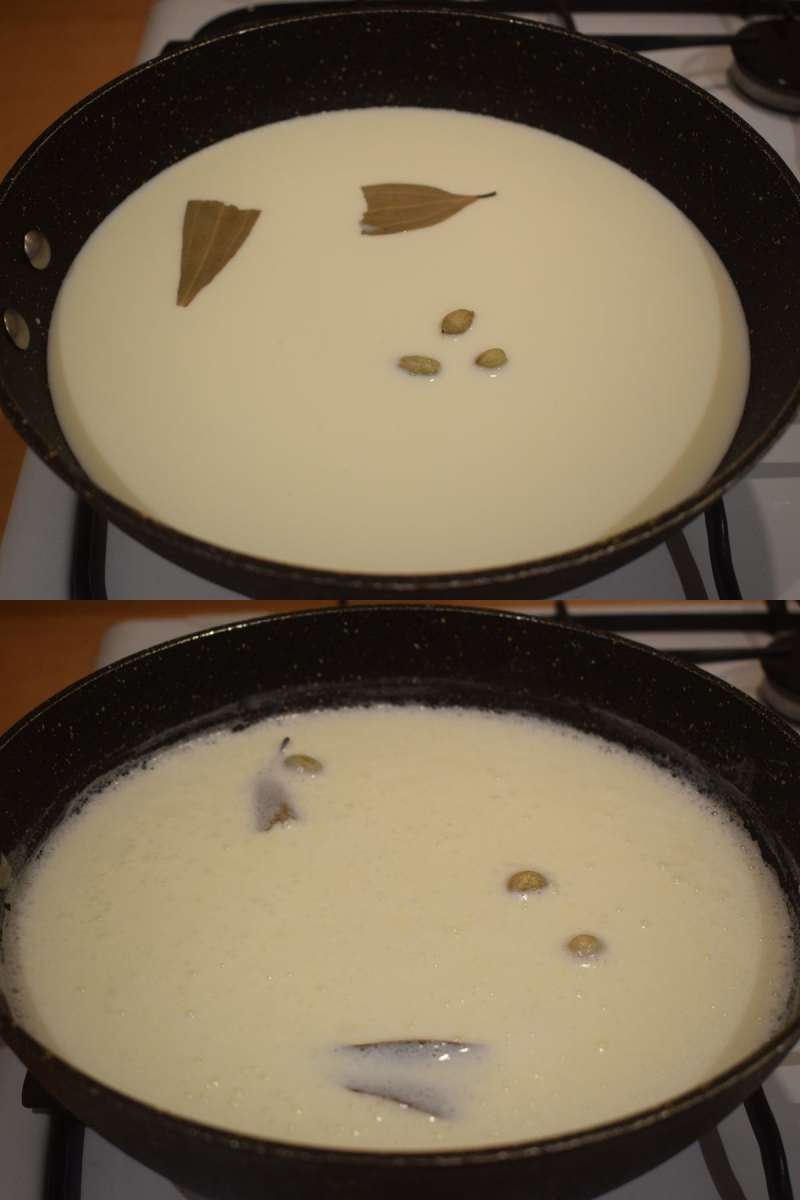
- Add 300 grams grated or small pieces of date palm jaggery aka patali gur into the milk and stir it until the jaggery gets melt. Then cook it in low flame for another 5-6 minutes. You can adjust the sweetness accordingly.
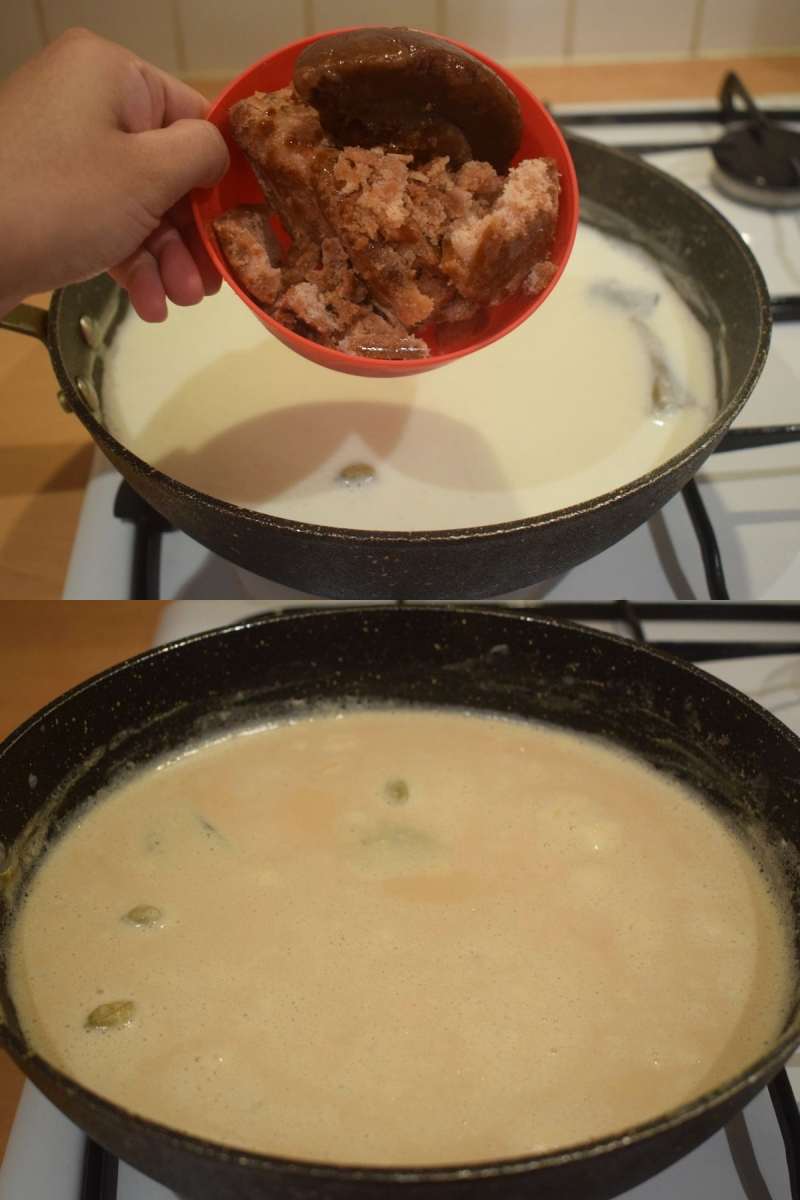
- Add the choshi (Step 7) into the pan in small batches and give a gentle stir. Don’t add all the choshi at a time then they may stick to each other. Sprinkle the choshi in small batches into the milk and stir once before adding the next batch.
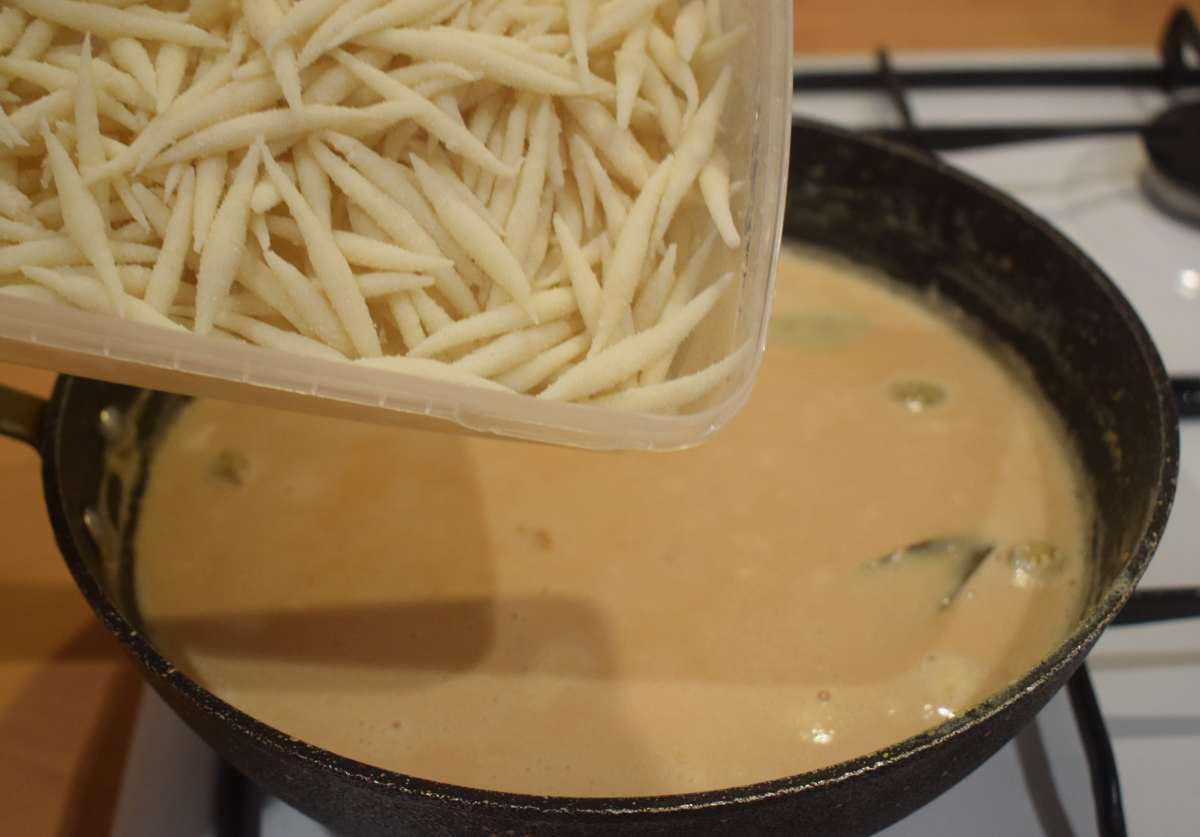
- Cook the choshi in low flame for 8-10 minutes until it gets cooked. Stir it very gently in regular intervals when required. Choshir payesh gets thicker after cooling down. So adjust the consistency accordingly.
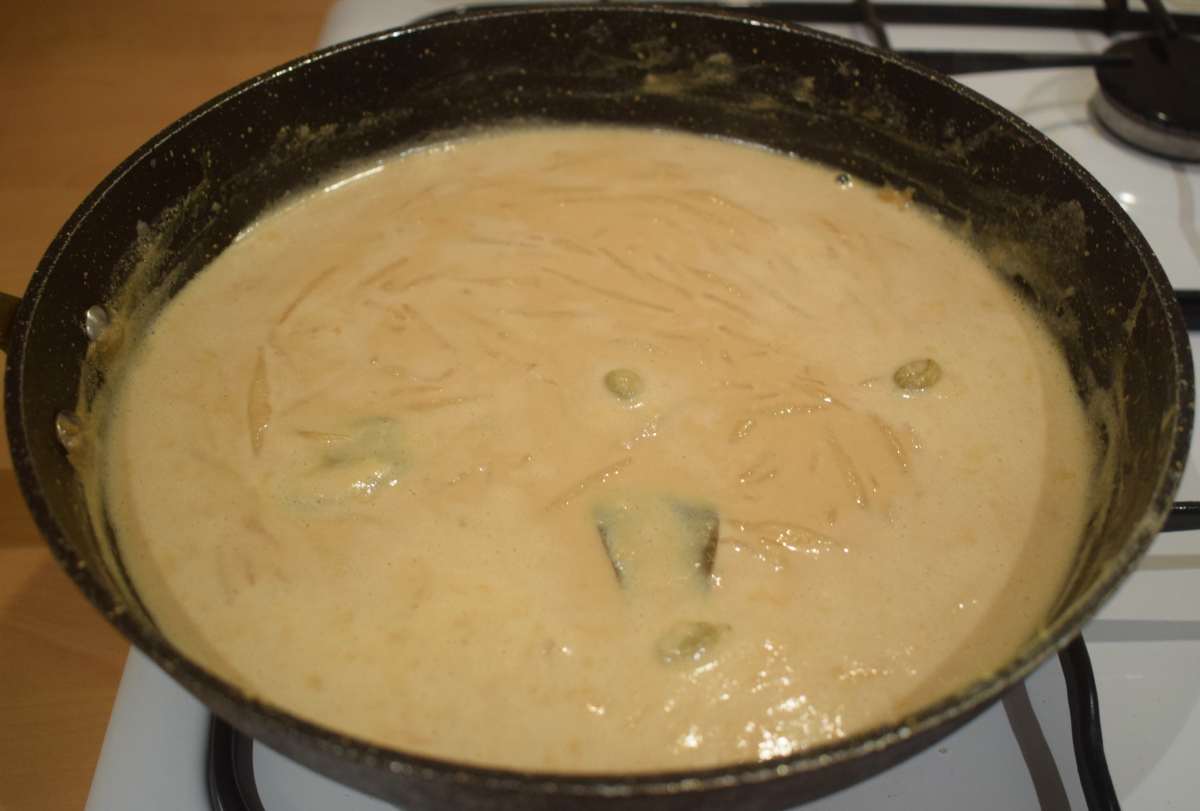
- Switch off the flame and allow it to cool down completely before serving.
Serving Instruction
Transfer the choshir payesh into serving bowls. Serve it at room temperature to enjoy its best taste. Serve it to your family and friends and enjoy the classic Bengali delicacy.
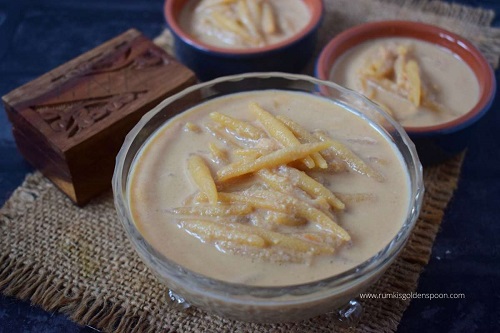
Ingredients
1 cup = 250 ml For the rice dough
- ¾ cup Rice flour
- 1 cup Water
- ½ teaspoon Salt
Ingredients for choshir payesh
- 1 litre full cream Milk
- 300 grams Patali gur aka Date palm jiggery
- 1 Bay leaf
- 3 Cardamoms
Instructions
- For the dough, first take a pan and add 1 cup water to it. Then add ½ teaspoon salt into the water and allow it to boil thoroughly.
- Once the water stars boiling, put the flame in low and add ¾ cup rice flour into it. Cover the pan and cook it in lowest flame for 2-3 minutes.
- Take off the lid and mix the content thoroughly until it turns into a dough.
Note: At this stage, if you feel the dough is too tight then you can add little bit of water and if you feel the dough is too soft then you can add rice flour to adjust. For me, the measurement was perfect and did not require any extra water or rice flour.
- Switch off the flame and transfer the content to a separate plate. Allow the content to release little bit of heat. Knead the mixture thoroughly to a smooth and soft dough. Make sure the mixture is warm during the time of kneading.
- Transfer the dough into a bowl and cover it with a wet cloth.
- On a clean surface, dust with rice flour. Take large pinch of dough like a ping pong ball in your hand and again cover rest of the dough with wet cloth. Make a thin rope by rolling the dough on the surface with hands.
- Take a tiny pinch from the dough and rub it on the surface 2-3 times with your palm applying light pressure to shape the small elliptical dumplings aka choshi. This is the traditional way of preparing choshi.
- But there is one more way to shape choshi for novice. You can take a tiny pinch of the dough on your palm and rub it with another palm of your hand applying little pressure. In this way, you can easily shape the choshi.
- After shaping the choshi, sprinkle little bit of rice flour on them so that they can’t stick to each other. Repeat the same process and prepare choshi with rest of the dough.
Note: You can shape the choshi small, medium or large according to your preferred size.
- Now put a heavy bottom pan on medium flame and add 1 litre milk into it.
- Add 1 bay leaf, 3 cardamoms into the milk and give a stir. Once the milk starts boiling, put the flame in low and reduce it for 10-15 minutes.
- Add 300 grams grated or small pieces of date palm jaggery aka patali gur into the milk and stir it until the jaggery gets melt. Then cook it in low flame for another 5-6 minutes. You can adjust the sweetness accordingly.
- Add the choshi (Step 7) into the pan in small batches and give a gentle stir. Don’t add all the choshi at a time then they may stick to each other. Sprinkle the choshi in small batches into the milk and stir once before adding the next batch.
- Cook the choshi in low flame for 8-10 minutes until it gets cooked. Stir it very gently in regular intervals when required. Choshir payesh gets thicker after cooling down. So adjust the consistency accordingly.
- Switch off the flame and allow it to cool down completely before serving.
KITCHEN TOOLS for the recipe:
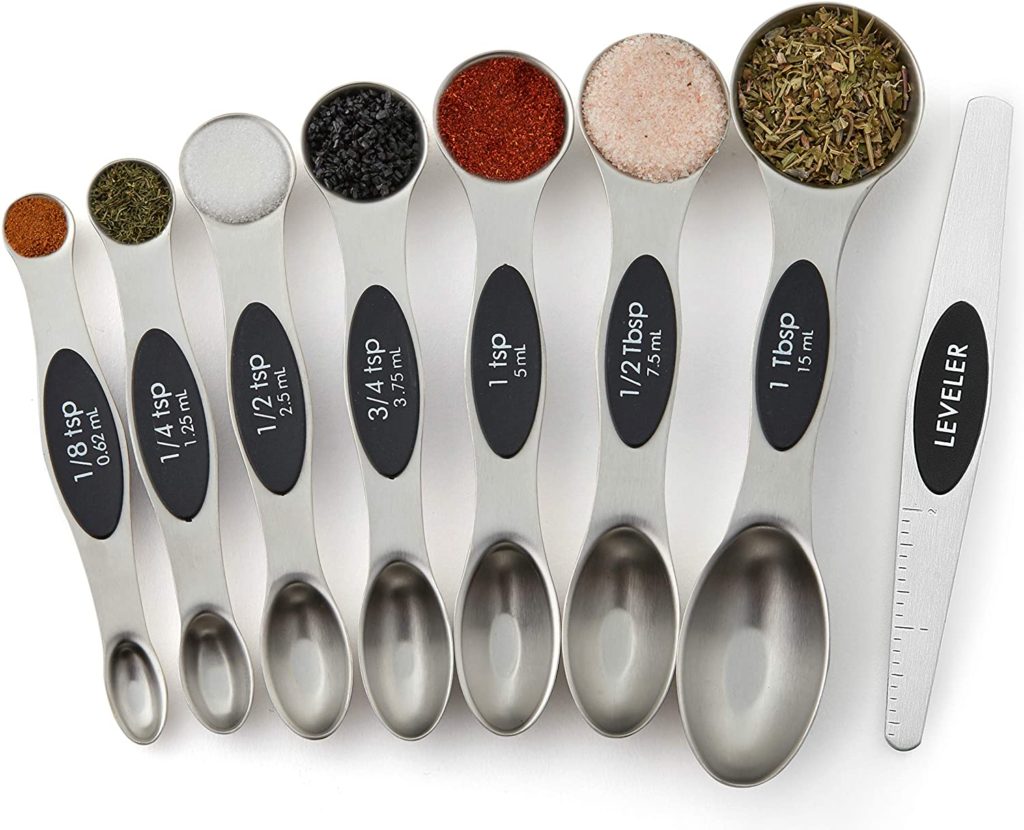
Measuring Spoons
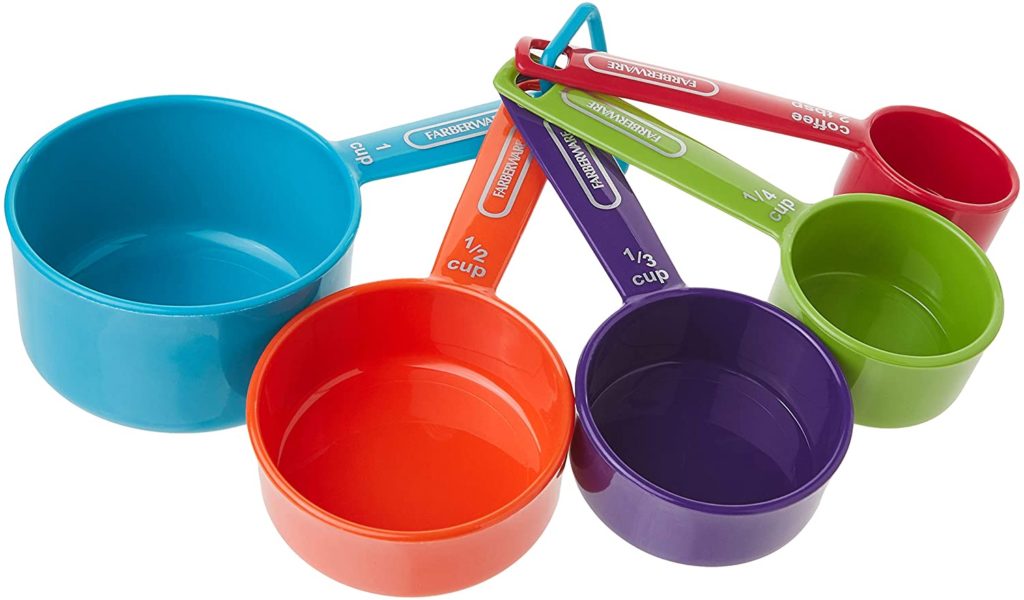
Measuring Cups
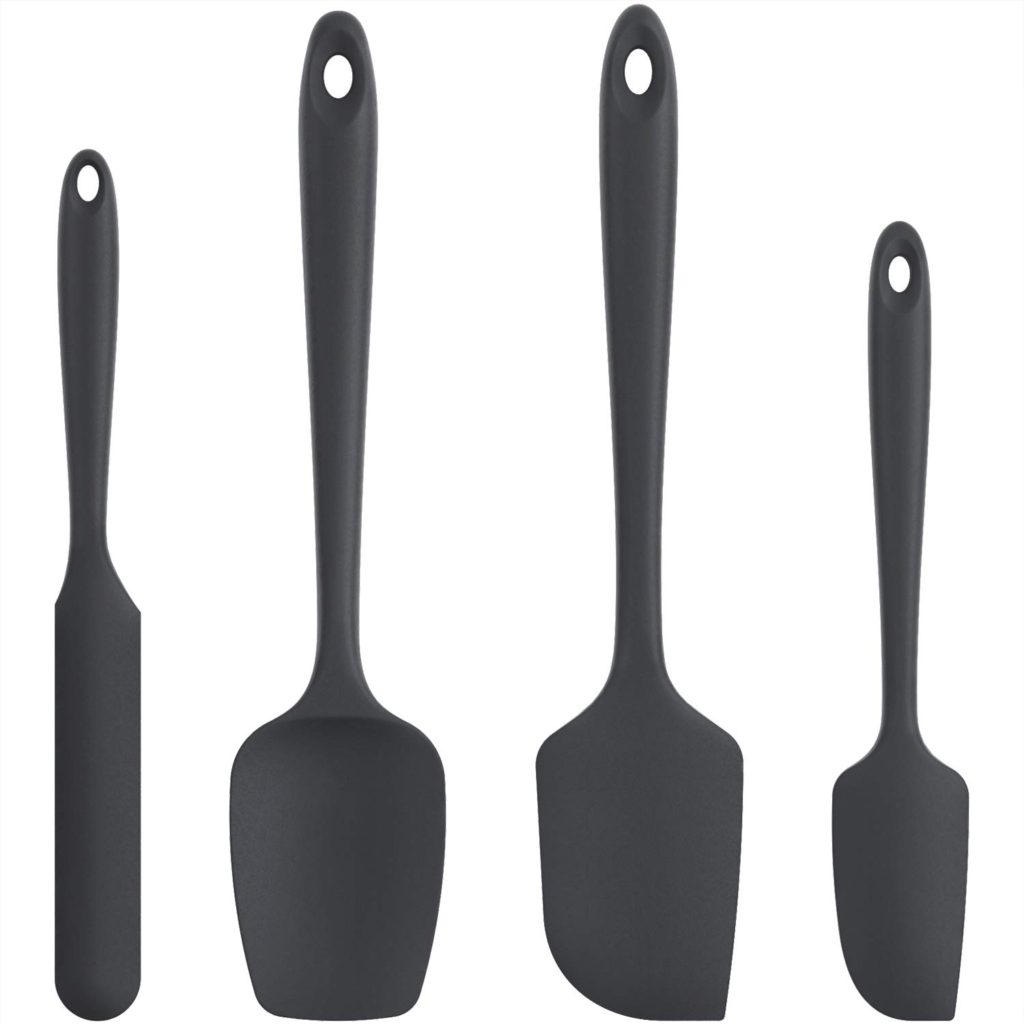

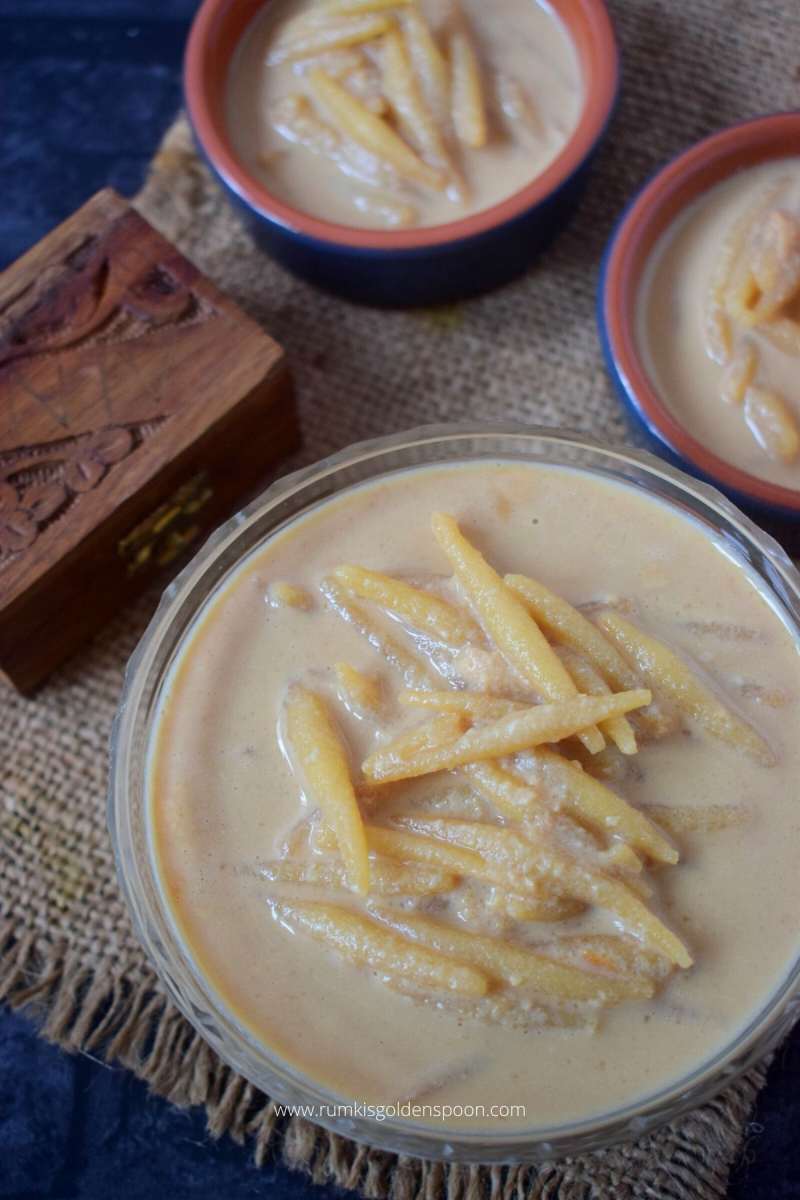
4 comments
[…] There are myriad Bengali pithe recipes in Bengali cuisine, among which patishapta, puli pitha, choshir payesh, pua pitha, nokshi pitha are a few of the most popular […]
[…] There are myriad Bengali pithe recipes in Bengali cuisine, among which patishapta, puli pitha, choshir payesh, pua pitha, nakshi pitha are a few of the most popular […]
[…] Choshir payesh Poa pitha Patishapta pitha […]
[…] There are myriad Bengali pithe recipes in Bengali cuisine, among which patishapta, puli pitha, choshir payesh, pua pitha are a few of the most popular […]